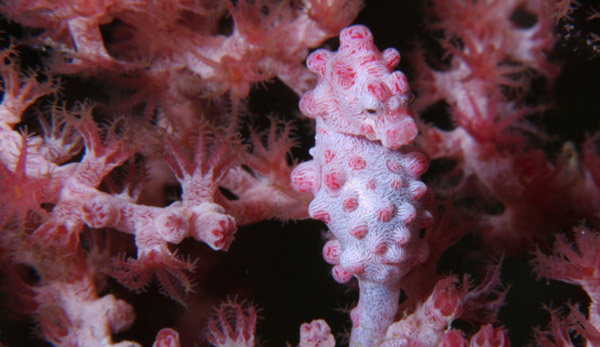H. bargibanti was one of the first pygmy seahorses discovered. In 1969 it was found in a lab, having hitched a ride on a gorgonian that was being studied. Since that time, H. bargibanti has been sought after by divers.
Habitat
This pygmy seahorses is found only on seafans of the genus Muricella. They are found at depths between 16 and 40 meters.
Range
H. bargibanti can be found in tropical waters in the Pacific around Australia, Indonesia, Japan, New Caledonia, Papua New Guinea and the Philippines.
Description
Small, no larger that 2.4cm. Two color variants seem to exist, a yellow and a pink, which matches the Muricella corals they inhabit. Their bodies are round with an extremely short, bulbous snout. They are covered in knobby tubercles that mimic the seafans they live on.
Life Cycle
Little is known about the lifecyle of pygmy seahorses, but of the pygmy seahorses, H. bargibanti is the most well known. They are thought to form monogamous pair bonds, even though many pygmy seahorse can be found on one gorgonian. Mating occurs year-round. On the lower portion of the abdomen, males have a brood pouch in which the female lays her eggs. They are fertilized by the male, and incubated until birth two weeks later.








this is very gooooooooooooooooooooooood